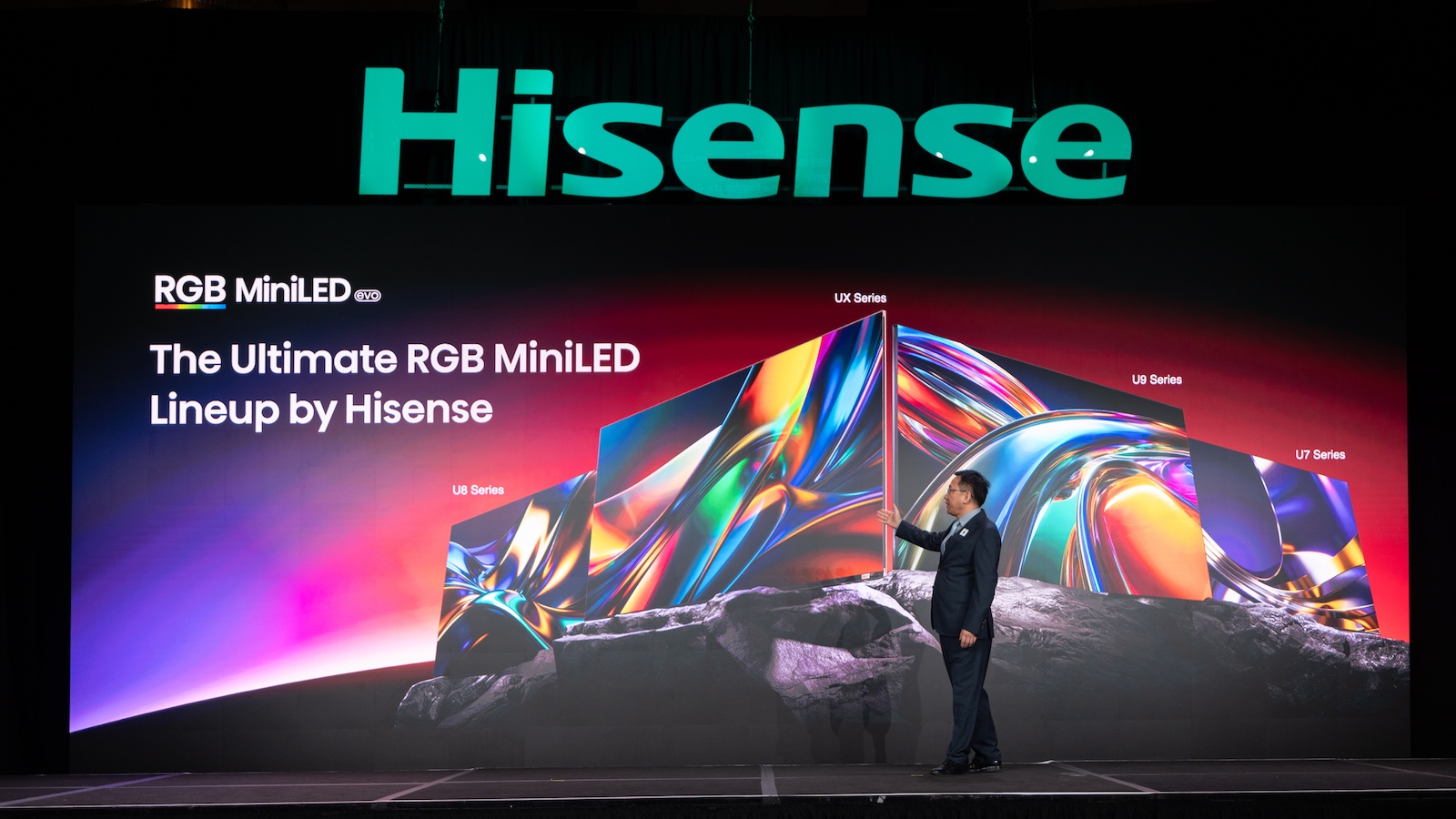The making of KEF LS60 Wireless: active vs passive, Blade influence, and the next 60 years of KEF speakers
We sit down with KEF's Jack Oclee-Brown, who says the new LS60 Wireless is the "transition point" for him in the passive vs active debate...
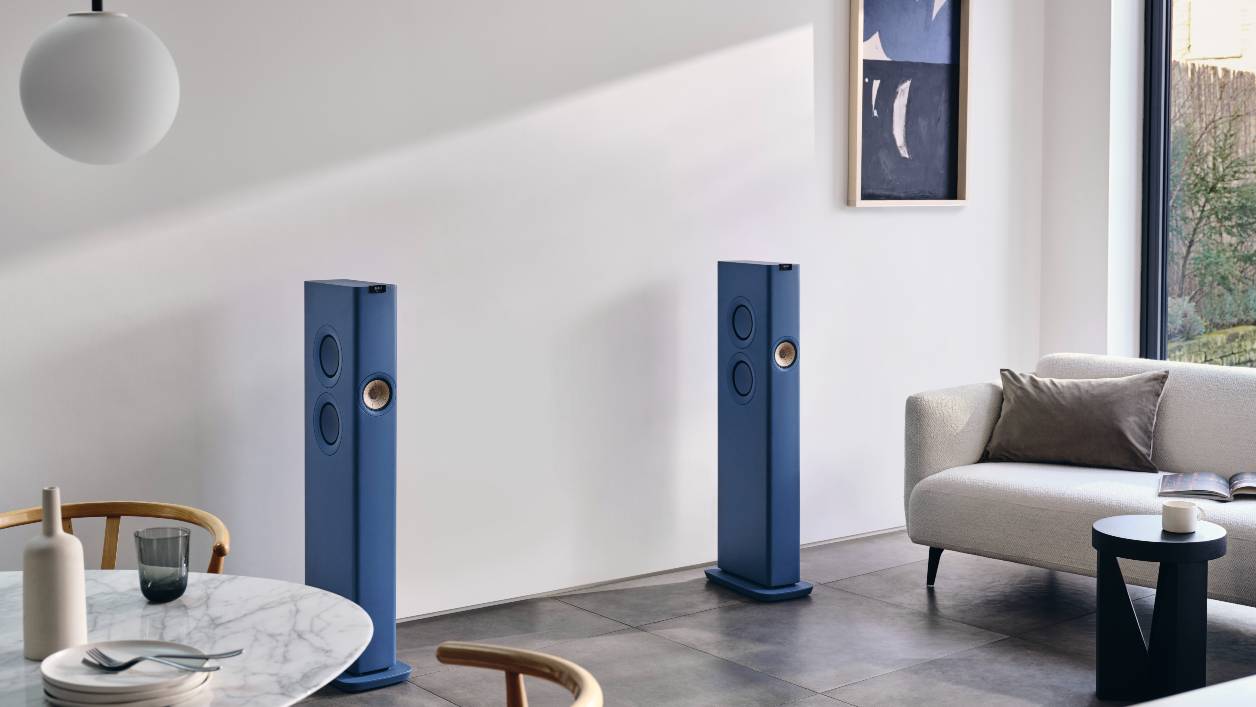
“If you're making an active speaker, it doesn't necessarily make sense to do the driver or acoustic design in the same way you would with a passive. You can, that's fine – but then you forego the opportunity to do something that might potentially perform better, or give the customer more options.” Those words were, post-pleasantries, the first uttered by vice president of technology at KEF, Jack Oclee-Brown, during our recent conversation with him, and they resolutely encapsulate the ethos behind, and effort that has gone into, the company’s latest product, the just-announced LS60 Wireless. Indeed, the all-in-one active floorstanding speaker system is unique to anything in KEF’s passive speaker catalogue – a ground-up design that, despite inheriting existing KEF technologies, is like nothing else currently on the market.
Really, you only need to look at the image of them atop this page to see that. Two super-slim towers, each the width of a CD and mid-waist in height, with a miniaturised Uni-Q driver on the baffle and two mid/bass drivers on the side panels. KEF has received much acclaim in recent years for its more aesthetically conventional active standmounter systems, the original and second-gen LS50 Wireless and smaller LSX, but adapting the concept for a floorstander form has seen Oclee-Brown’s team tear up the rulebook. The aim? To deliver a new calibre of active performance from a small, living room-friendly footprint. It’s a bold-statement product to celebrate KEF’s 60th anniversary this year, and could well be a seed from which many of the company’s creations grow over the next 60 years…
- The verdict is in! Read our KEF LS60 Wireless review
Big performance, bijou footprint
“This is really the first time we've said from the beginning, ‘this is going to be active so let's make a set of drivers and a platform that is going to hit a performance target, and at a size that people wouldn't normally expect to speaker to be able to do’,” says Oclee-Brown. “We're all used to this notion that if you want more bass and more efficiency, you have to build a bigger speaker. If you look at [speaker manufacturers’] product ranges – including ours – as you pay more money, you generally get a bigger speaker. That's fine for some of our customers, because when you're getting up towards a Blade or Reference speaker, you can take it as written that they've got a fairly big listening room – and probably fairly free rein on what goes in that room. But for most people, that's not the case at all.
“There might be users who are used to something ‘better’ from passive hi-fi they have or used to have but need something that's going to have a small footprint; something that is going to be able to sit in the living room and be usable for everyone in the family. And if we made something like a KEF R7 for those who want that performance level in active, it doesn't necessarily mean everybody's going to be able to have that – suddenly you've got something that takes up a lot more space. So we thought we'd try to be more aggressive than that and start with 'how do we make something which has got a very small footprint and very high performance?'
“The bottom line is that if you take the approach we have and try to use all the advantages at your disposal that come with active designs, then you can either take it one of two ways: you can take something with a conventional footprint and size and make it perform better. Or you can try and hit the same performance in a smaller package – and for this product, that's what we've done. We've tried to give you something that's going to perform – it's very hard to make parallels – like, say, something like an R7, with all the associated hi-fi outboard equipment you'd need, but in a package which is much smaller than an R5. So it's kind of a paradigm shift that says 'suddenly, you don't need all that space anymore'.”

From Blade to LS60W
The benefit of having a rich history of speaker design spanning both price extremes is that KEF has heaps of existing engineering expertise to draw on. Here, KEF implemented the single apparent source technology used by its reference speaker Blade as a way of making the LS60 Wireless as narrow as possible.
“The width of the bass driver is normally what determines how wide a speaker is, but by using Single Apparent Source [technology], where you put bass drivers on the side, you overcome that,” explains Oclee-Brown. “Suddenly, the speaker width can be determined by the Uni-Q driver. With Blade, we were trying to create something very, very high performance, so the whole thing ends up being 200mm wide but still has nine-inch bass drivers. If we had put the bass drivers on the front, the width would have been 350mm. So we tried to do the same thing here but on a different scale.”
The latest hi-fi, home cinema and tech news, reviews, buying advice and deals, direct to your inbox.
To form the first prototype, KEF aimed for an MF to LF crossover that was a bit higher than the Blades, around 400Hz, and from there was able to gauge what size of Uni-Q and bass drivers were needed. “It wasn't by any means the finished item,” admits Oclee-Brown. “But already you kind of go ‘this is going to be pretty cool if we can make this work’. From day one it had that really big soundstage that you can get from Single Apparent Source, like Blade has. But it was also obvious from the beginning that we wanted to push the bass performance a lot further, and straight away we ran into the problem of the bass drivers being a major limiting factor…”
The big battle for bass
Indeed, one of our very first reactions to images of the LS60W concerned how, or rather if, KEF had managed to get decent bass output from such a low-volume cabinet. And as you might’ve guessed, it doesn’t sound like a doddle…
“One of the things that came from all these decisions is that the cabinet is going to be very low volume, and for a passive speaker, that just doesn't work at all – you end up with something with no bass!” says Oclee-Brown. “But for an active, this is where you can start bending the rules. If we can make the bass drivers have more power handling and enough throw capability, we can just put bigger amps in and then use DSP to regain the bass we'd lost. Again, single apparent source works well for this because instead of having, say, one bass driver, you end up with four, so it's four drivers sharing the power, so your power handling problem starts to reduce.
“But you still need that high excursion, and the problem then is you’re trying to fit two bass drivers back to back in a 12cm-wide cabinet. We spent a lot of time trying to make 6cm-deep bass drivers that would hit the excursion we needed, and we were hitting our heads against a brick wall trying to make it happen. That is actually where we started to think of silly ideas of how to make the bass drivers slimmer, and that's when the idea of Uni-Core came up.”
KEF’s Uni-Core technology (not to be confused with KEF’s Uni-Q driver) works by arranging two voice coils, one with a greater diameter than the other, concentrically so that the smaller one can move within the larger one without them colliding. While we now know that Uni-Core was derived as a solution for the LS60 Wireless, the solution actually debuted in KEF’s dinky (246 x 256 x 248mm) K62 powered subwoofer last year.
Oclee-Brown spells out the theory: “If you take a driver and you look at what composes the depth, basically half of it is the cone, moving parts and the suspension, and the other half is the motor system. And you can't really squeeze them down without making the throw lower. Make the moving parts slimmer and they start to hit things; make the motor slimmer and the ‘Xmax’ [operating range] of the motor drops off. So, we've got two of these back to back and we were starting to think ‘well, what if we try and make one motor that can drive both of the cones?’ So then our 12cm [width], instead of being split into kind of four (moving parts, motor, motor, moving parts) is split into three – so moving parts, one motor, and then moving parts. And the only way you can really do that is to use different voice coil sizes that go inside each other.
“Honestly, it was one of those things we almost rejected in the discussion stage because we were all pretty much convinced it would be a real pig to get working. It was only once we rejected all the other ideas that we thought we'd give this a go, and on the simulations a lot of things worked out better than we expected. So getting the voice coils to have the same Xmax, getting them to be the same weight and same strength… it all kind of fell out naturally. It was quite a surprising one.”
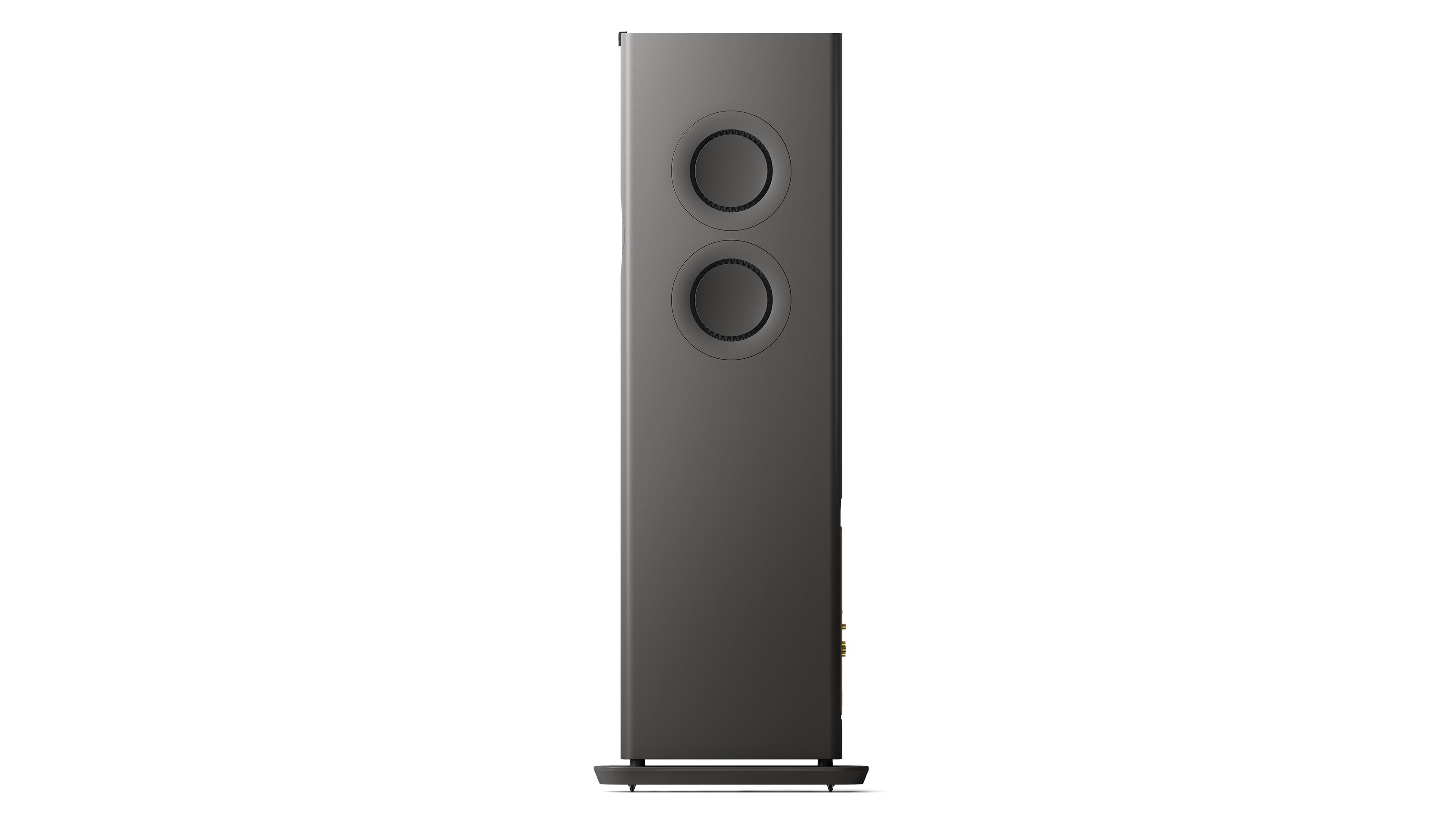
For the Uni-Core bass system to work, Oclee-Brown says that a closed-box design is critical. “If you start shrinking the volume of the loudspeaker, then to maintain a deep-tuning frequency on the port, the port has to get longer and longer and longer, and at some point, you simply can't get enough bass out of the system – you can't get the port in there, the port dominates the thing and it all falls apart,” he explains. “But if you go to closed box, you can overcome things with enough amplifier power and enough EQ.
“You don't get a free lunch, though. Because your natural acoustic system hasn't got very much bass efficiency, you're driving it hard, even when you're playing at low levels. The danger is that it just doesn't sound very good because it's doing a lot of work. So the key for that is to have very low distortion and, again, with the system being active, you can cheat. In a passive system, there's only one way to make things low distortion: make the drivers better. But in an active system, there’s a lot more going on, so we developed a system with a two-pronged attack. Firstly, we don't use a conventional amplifier; it's an amplifier with a special feedback loop where we positively feed back some of the voice coil current, which has the effect of cancelling some of the driver distortion.”
Secondly, as the benefit (and sometimes downfall, if executed poorly) of a digital active system is being able to manipulate the output to suit the design via digital signal processing trickery, Oclee-Brown was able to do just that by adding distortion into the DSP to cancel the distortion from the driver: “By doing those two tricks, it’s clean and you can have a lot more bass extension when it's playing quietly; it doesn't sound strained.”
As a byproduct of KEF’s journey towards the LS60W producing quality bass – bass which can supposedly “wipe the floor with an R7 in the 20Hz to 40Hz region” due to its closed-box design – Oclee-Brown found that you end up with other sonic differences too: “Being closed box and having that really deep extension also changes the sound of the product, because it gives you much, much more control in the bass so you don't have the overhang that comes with the kind of roll-off. The sound characteristic of the LS60 is kind of quite different, then, and I think in a really, really good way. It will be interesting to see the reaction to it.”
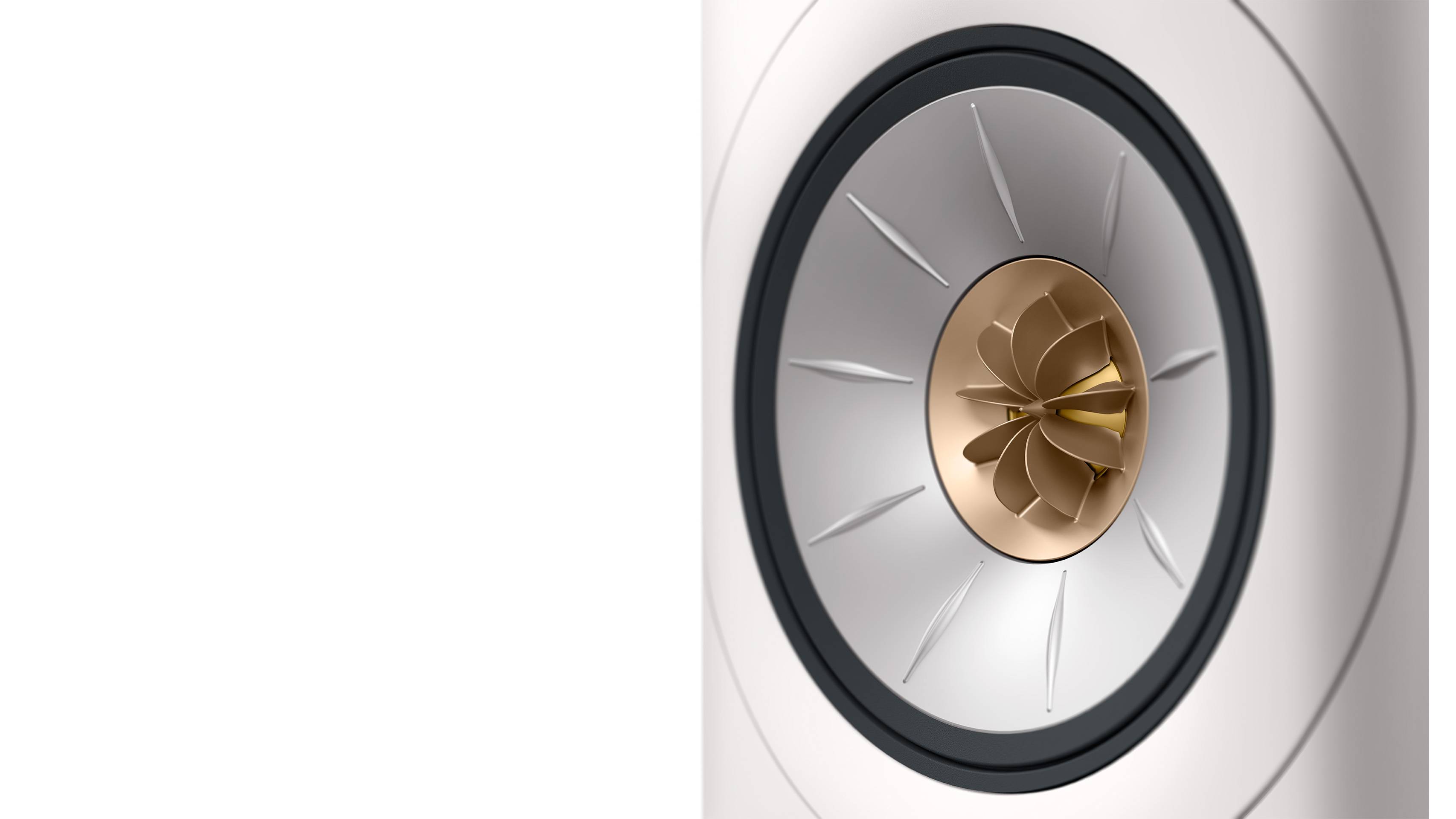
Long live Uni-Q
By comparison, the Uni-Q driver seems more straightforward. But it is a new one and, at four inches, is much smaller than the ones KEF normally makes. “One of the key things was how we make a 19mm tweeter sound like it's not limiting the output,” says Oclee-Brown. “The Metamaterial [as seen on the LS50 Meta and LS50 Wireless II] is part of that, but so are redesigned motor systems, and a silicone rubber surround so the dome can move along the way.
“There’s interesting stuff on decoupling as well. The thing you find with the drivers is that they vibrate and shake the box, so one way to avoid that is to mount them on resilient springs, which we've done in the past. We've had mixed results on this because you can always get it to work really nicely in the lab, but in production, it’s quite tricky to get the right stiffness on the springs every time as you're incorporating that spring into the assembly process. The other issue is that the whole driver is going to be moving a lot, meaning you get sound coming off the chassis. So, we thought we'd do something we think is better: we intentionally weakened part of the chassis to make the spring, and then we added a separate damper. So it's just like a suspension system in an old van or something with leaf springs and blocks of rubber! But the benefit is that we do it in the moulding, so absolutely every time you make one of these, the spring is exactly the same.”
Uni-Q is now in its twelfth generation and Oclee-Brown says it’s not only the single biggest breakthrough in his time at KEF but also very much part of the brand’s future roadmap.
He says, “the original idea – 'we'd like to have a single driver that does the whole spectrum but we can't, so let’s basically miniaturise one tweeter and put it in the other' – was to make two drivers behave like that one driver, really. The first Uni-Qs were a bit dodgy in some respects – they sounded a little odd. I think that I joined almost at the point where the Uni-Q started working. Mark Dodd [head of group research at GP Acoustics, KEF’s parent company] basically came in and said, 'Right, if you're gonna do this, you have to treat it like a waveguide – you have to have the dome the right shape, the waveguide the right shape, and use computer simulation to demonstrate that.' And then we started to make drivers using that approach and suddenly we had the chance to have uncompromised Uni-Qs.
“And honestly, if you look at our driver responses now compared to the best available individual tweeters and midranges, in many cases we're surpassing them. As the state of the art moves forwards on drivers in general, we'll have to be keeping up with that, and there are certainly things that we can improve on that will still make an audible difference. I don't think there's much further we can take the concept exactly, other than just to continue improving and improving it. But it will stay, in terms of the philosophy of how we see a speaker should be and how things should sound.
“Uni-Q is just going to continue to be the icing on the cake for KEF customers, that we can deliver cutting edge driver design but also the benefit of having a single source. It's a bit complicated to design – but that's my problem, not the customer's!”
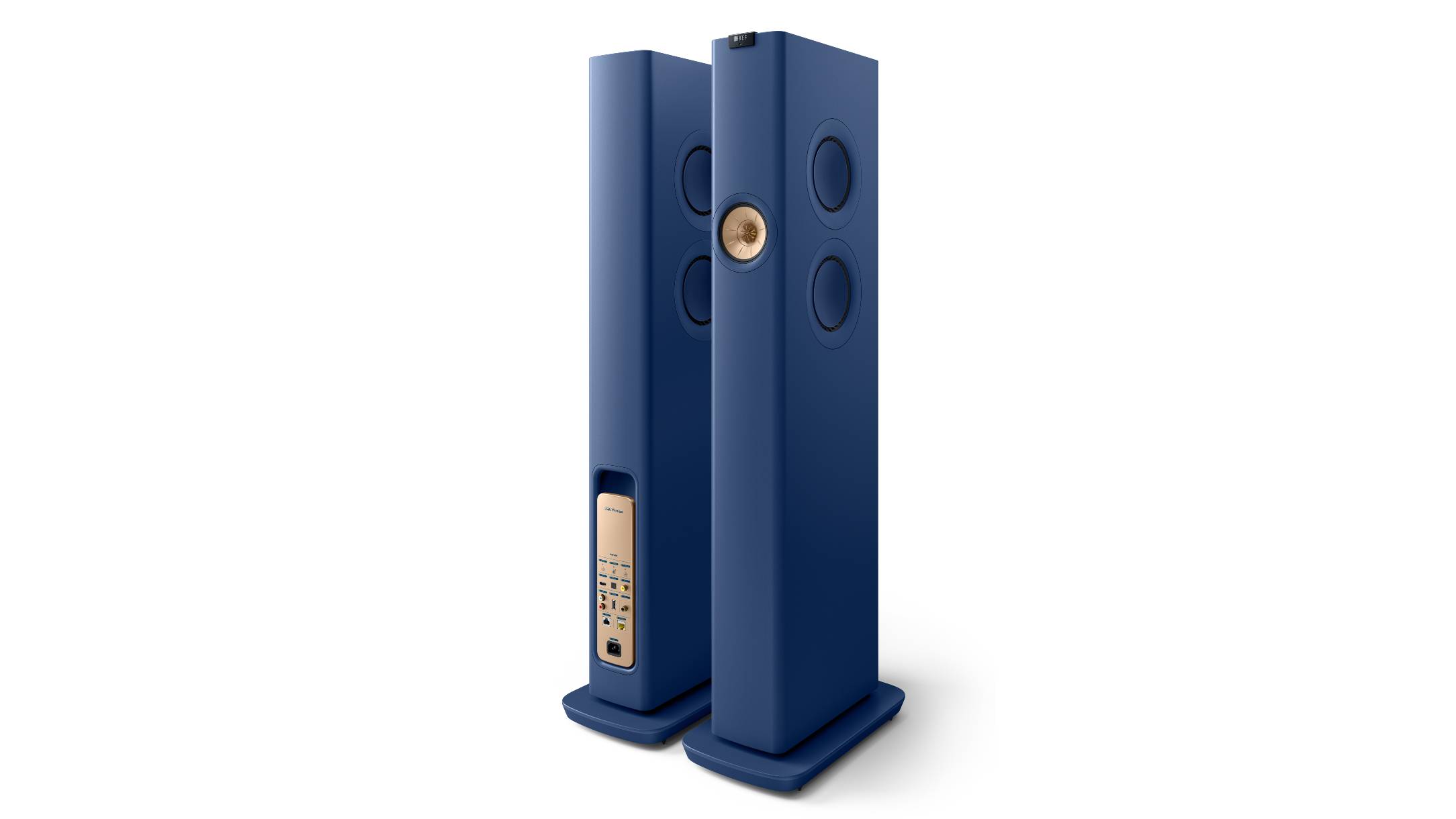
The endgame: active or passive?
The question is, are passive or active designs the most desirable? Indeed, does active have the legs to be the endgame?
“I think this might be the transition point for me,” admits Oclee-Brown. “You get some improvement because in active you got a DSP crossover and the amps are more optimised for the drivers. But you have to balance that against the one-box system concept versus something that is separate and can be upgraded incrementally. if you're a traditional hi-fi customer and are used to the idea of improving your system over time, then buying an all-in-one like this kind of puts a stop to that quite abruptly. So I can see that that might be a problem for some people.
“But once you get to something like this, you just can't do it passively. Even if you put the benefits of footprint to one side, the difference in the sound is for me worth it – especially in the bass. Closed-box bass sounds faster and cleaner, and then when you throw in the active distortion reduction too, plus the ability to tune the speakers with the app so that you can get them to sound better in your room, it's pretty hard to ignore. So this is maybe the point at which I would say, ‘You know, I think I prefer LS60W to R7 and an amp.’ And I'm hoping that there will be enough people interested in this kind of product. But we're only just starting with this... so there are definitely things in the future which should be able to make a concept like this work even better.”
“I also have a slight worry about whether people are going to take it seriously or not. Because everybody's seen a kind of lifestyle end of the market, where you have had products with these footprints in very highly stylised packages. And they have their place absolutely. Like, you know, some of the Bang & Olufsen products, for example, are really beautiful things and lots of people have bought them. But this is trying to do something a bit different, which is not to compromise on the sound side. I think that was always the case with the LS50 Wireless II – that's why I think people were interested to buy that rather than, say, a one-box streaming speaker because it was kind of proper hi-fi at the same time as being all the convenience of a streaming system. And I feel like the message will be harder this time around because it looks so different from the hi-fi speaker. But this seriously performs.”
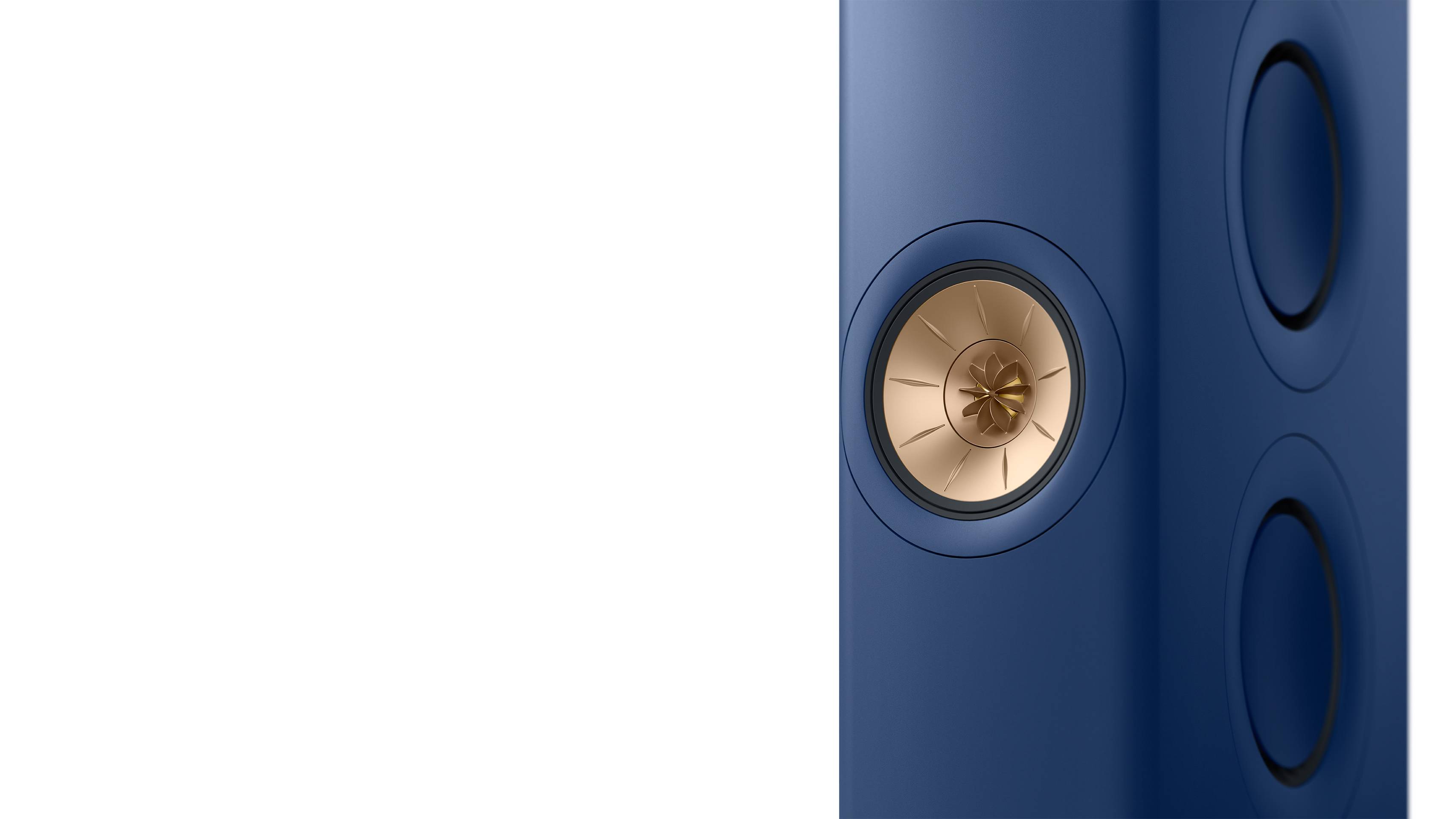
The next 60… at KEF and in music
Oclee-Brown was - sadly - careful to avoid leaking details of KEF’s next projects, but it seems likely the company already has its sights on another active project. “In terms of what's going to be the next thing, it's about what we have talked about,” says Oclee-Brown. “It's, 'OK, how do you reset your way of designing a speaker now that you know it's going to have DSP and amplifiers in it?’ I think the LS60 is the first glimmer of 'you could do things differently and get these benefits'. And there's definitely more to do on that, so that'll be exciting."
While it’s hard to see passive speakers and separates not remaining the majority stake of hi-fi, streaming-capable active designs look likely to feature in more people’s homes and be the dominant driver of future audio innovation. Though hardware has a big part to play in that of course, as do music streaming services and standards. Oclee-Brown, for one, hopes that curation improves.
“This is the caveat to streaming services that I think everybody struggles with," he says. "When I was getting into hi-fi, it was all CDs – and or a lot of our customers from that generation, or even from earlier when it would have been LPs – and the way I would walk into my room and go 'hmm what shall I listen to' was very interactive with the media. I’d look through the edges of CD covers, and you get used to seeing just the colour and going 'oh yeah, I fancy listening to that'. You didn't have to remember what to search for. At the moment, we don't really have a good replacement for that. So I really, really hope curation gets a lot better – some suggestion that's much more intelligent than what we get at the moment.
"I think we're bound to see some kind of implementation of machine learning or artificial intelligence in hi-fi too. We're still very much stuck on this notion that whatever has gone onto the disc is what we should be reproducing. There are loads of records which I love, but when they were put onto the disc, they weren't great; there was some kind of problem with them. That might be because of the system they were using to monitor the recording at the time, or just an error or something like that. For me to manually correct something as a professional engineer, I probably could take a track and spend a day making it sound more like my taste so I could enjoy it more, but who's going to do that? With AI and machine learning, there'd be the possibility of doing this more. I don't know where that would go but it'd be interesting.”
Who knows whether digital music curation will improve or if AI will infiltrate music and hi-fi, or indeed if active all-in-one systems will become the future music playback of choice for audiophiles. But the road ahead for active loudspeaker design and streaming seems long and promising – for KEF, at least.
MORE:
12 of the best KEF products of all time
KEF refreshes flagship Blade and The Reference speakers with innovative MAT technology
Active vs passive speakers: what's the difference? Which is better?

Becky is a hi-fi, AV and technology journalist, formerly the Managing Editor at What Hi-Fi? and Editor of Australian Hi-Fi and Audio Esoterica magazines. With over twelve years of journalism experience in the hi-fi industry, she has reviewed all manner of audio gear, from budget amplifiers to high-end speakers, and particularly specialises in headphones and head-fi devices.
In her spare time, Becky can often be found running, watching Liverpool FC and horror movies, and hunting for gluten-free cake.
